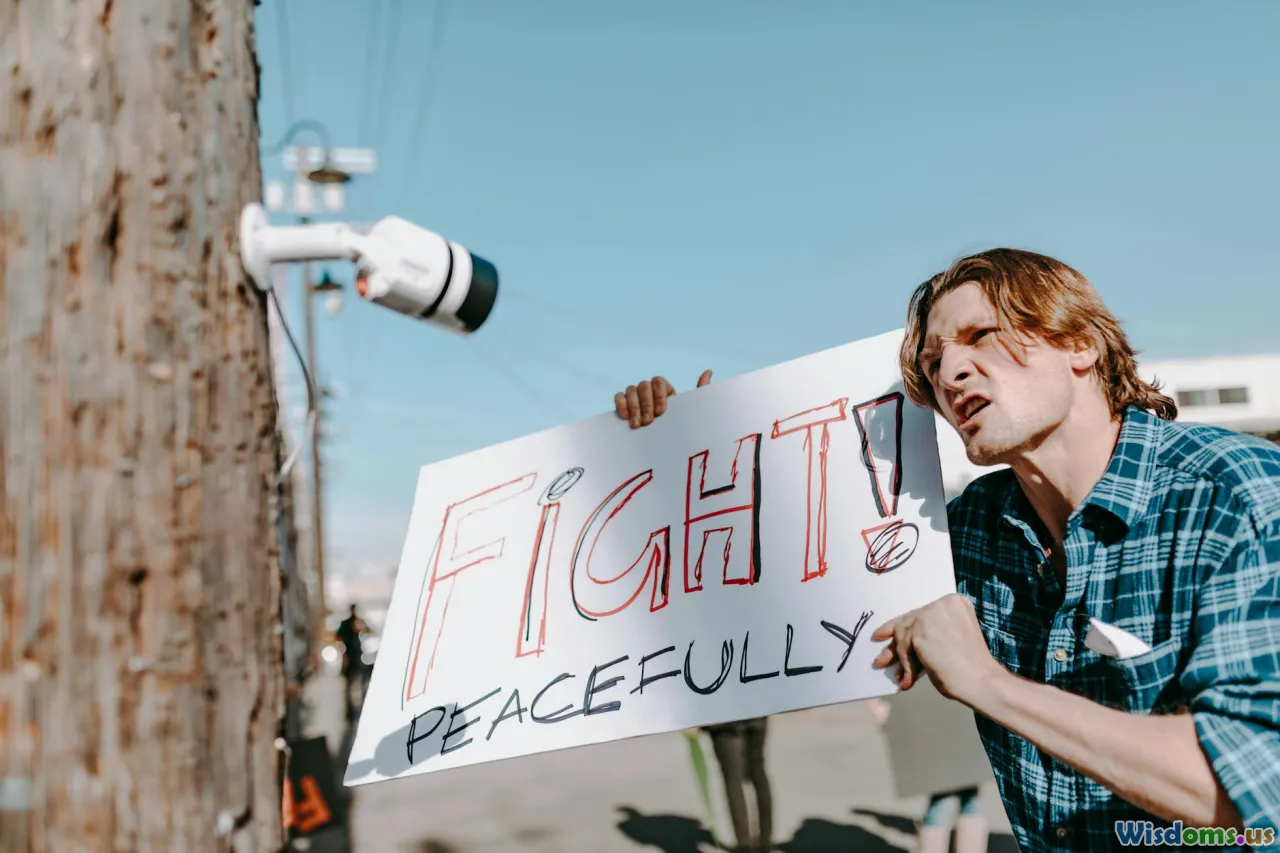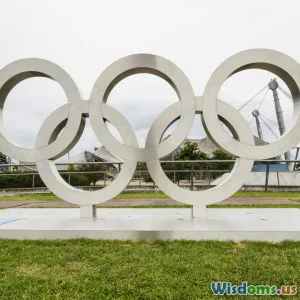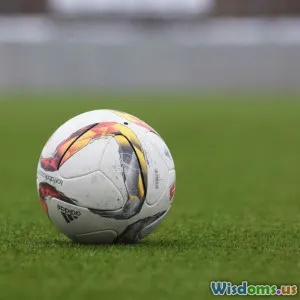
The Untold Impact of Social Movements on Baseball History
16 min read Explore the powerful influence of social movements on baseball history, from desegregation to labor rights, and discover how activism shaped America's pastime in unexpected ways. (0 Reviews)The Untold Impact of Social Movements on Baseball History
Introduction
Few games are as deeply interwoven into America’s identity as baseball. It has long been dubbed 'America’s pastime', celebrated for its thrilling moments, legendary players, and cherished traditions. But beneath the smooth arc of a home run or the quiet intensity of a pitcher’s duel is a far more complex story—one shaped as much by protest as by play. Social movements both subtle and seismic have fundamentally transformed the course of baseball history. Yet, these influences often remain overlooked when recounting the legacy of the sport.
How did the tides of the civil rights movement collide with the traditions of dugouts and clubhouses? In what ways did labor struggles swing the gate open for free agency? And what can we learn from the tenacity of women and LGBTQ+ pioneers who broke barriers beyond the ballpark fence? This in-depth exploration opens a window on the untold impact of activism on baseball, revealing hidden battles fought off the field and the indelible changes they made to its history and culture.
The Shadows of Segregation: Baseball and the Civil Rights Movement
Racial Segregation in Early Baseball
At the turn of the twentieth century, baseball mirrored the racial divides of American society. Despite the game’s ideals of equality and merit, the color line—a seemingly unbreakable barrier—excluded Black players from Major League Baseball (MLB) for more than half a century. Black athletes such as Oscar Charleston and Satchel Paige showcased extraordinary talent in the Negro Leagues, but the big stage remained prohibitively white.
The roots of this segregation were deeper than team policy. After being unwritten in the 1880s, the racial color line became a tacit agreement that only white players would be allowed in the MLB. This division was symbiotic with wider Jim Crow laws and societal prejudices of the era. Black teams and players developed their own leagues, fan bases, and distinctive styles of play. But beneath the competitive spirit was an unyielding sense of exclusion.
Jackie Robinson and the Breaking of Barriers
The postwar years brought seismic change—not only in the fabric of American society but also on baseball diamonds across the country. In 1947, Jackie Robinson shattered the color line by donning a Brooklyn Dodgers uniform, a move orchestrated by Dodgers President Branch Rickey with both courageous calculation and a sense of social justice.
Robinson’s debut was more than an athletic milestone; it was a sociopolitical earthquake. He endured endless taunting, death threats, and intimidation. Teammates were told they’d be replaced if they refused to play alongside him. As Robinson recalled, “Plenty of times I wanted to haul off when somebody insulted me for the color of my skin, but I had to keep my head.” By showing discipline, courage, and world-class ability, Robinson became an undeniable symbol of the wider civil rights movement unfolding across the country.
The impact was swift: Within twelve years, MLB fielded more than 100 Black players, and legends like Hank Aaron, Willie Mays, and Ernie Banks rose to fame. Studies estimate that the integration of baseball contributed significantly to changing public opinion about interracial harmony—even years before key Supreme Court rulings.
The Reverberations: Legacies of Integration
Robinson’s courage paved the way for deep and lasting reforms. Integration of teams soon forced stadiums, hotels, and restaurants to confront their own discriminatory practices. The role model effect echoed beyond baseball; young African Americans across the U.S. witnessed a tangible breakthrough in the struggle for civil rights—a symbol that sparked hope and possibility during turbulent times.
The Negro Leagues eventually faded, but their legacy and players remain celebrated today, achievable in part due to a 2020 ruling by MLB to recognize some Negro Leagues as major leagues retroactively. This move, over seventy years after Robinson took his first at-bat, underscores how social justice campaigns continue to re-shape how baseball history is written and remembered.
Gender Equality: Women on the Mound and in the Boardroom
The AAGPBL and the First Professional Women's League
As the U.S. entered World War II and many male ballplayers traded uniforms for military service, professional baseball faced uncertainty. In an innovative yet little-known moment of inclusivity, the All-American Girls Professional Baseball League (AAGPBL) launched in 1943, inviting women into the professional baseball fold.
The AAGPBL wasn’t merely a distraction—it became a phenomenon, with teams like the Rockford Peaches drawing crowds and newspaper articles nationwide. The league showcased remarkable talents—from pitcher Jean Faut, who threw two perfect games, to player-manager Dottie Kamenshek. “The league changed our lives and much of society’s perceptions about what women could do,” Kamenshek later said.
By 1954, over 600 women had played professionally in the league, inspiring generations and challenging stereotypes in sports and beyond. Only decades later was their legacy brought to the national spotlight (“A League of Their Own,” 1992).
The Ongoing Struggle for Equity
Despite progress, baseball remains one of the few major American sports without a women’s equivalent at the professional level to rival the MLB. However, the spirit of the AAGPBL endures. Organizations like Baseball For All and the formation of the USA Women’s National Baseball Team have worked tirelessly to expand girls’ access to the sport and challenge norms. In 2022, women held over 20 coaching or leadership positions in major league organizations—a figure that continues to rise.
More recently, figures like Kim Ng, hired by the Miami Marlins as general manager in 2020, have broken glass ceilings in baseball executive offices. Ng, the first woman and first person of East Asian descent to hold GM responsibilities in the MLB, observed, “If we—women and minorities—don’t continue to fight for advancement, we risk stalling the momentum that others have helped create.”
Labor Movements and the Free Agency Revolution
Early Exploitation and the Reserve Clause
For much of its early history, baseball players—regardless of acclaim—were tightly bound by contracts that limited their rights and earning power. The infamous reserve clause in player contracts kept salaries artificially low and prevented players from choosing their employers.
These exploitative conditions led to the formation of the Major League Baseball Players Association (MLBPA) in 1953, solidifying players’ voices against powerful owners. Labor disputes became commonplace, with walkouts and other demonstrations in the 1960s and 1970s focused on cracking open the restrictive world of professional sports employment.
Curt Flood’s Stand and the Advent of Free Agency
No story of baseball’s labor movement is complete without Curt Flood, an outfielder for the St. Louis Cardinals who, in 1969, refused to accept a trade on the grounds that it treated players “as property.” Flood famously sued MLB, declaring, “A well-paid slave is, nonetheless, a slave.” Although the Supreme Court ruled against him, his battle galvanized the labor movement, and clubs eventually agreed to end the reserve clause, ushering in the era of free agency in 1975.
The impact was transformative. Salaries skyrocketed, and players gained greater control over their careers. According to the Society for American Baseball Research, the average MLB player’s salary rose from approximately $44,676 in 1976 (about $230,000 in today's dollars) to over $4 million by 2023. Flood’s willingness to risk his career for the benefit of future players marked a sea change—not just for baseball, but for professional athletics everywhere.
Baseball and LGBTQ+ Advocacy: Pride on and off the Field
Early Challenges and Hidden Identities
Despite a few exceptions, baseball’s clubhouse culture historically discouraged LGBTQ+ athletes from coming out, and few felt comfortable sharing their identities in public. Glenn Burke, an outfielder for the Los Angeles Dodgers in the late 1970s, is widely recognized as MLB’s first openly gay player within the league. Burke paid the price, enduring taunts and being pushed out of the majors by 27. In his own words, “They can’t ever say now that a gay man can’t play in the big leagues.”
While Burke’s openness was courageous, it was not until more recently, amid broader social changes and LGBTQ+ activism, that MLB began laying out welcome mats for diversity. Players such as Billy Bean (now MLB Ambassador for Inclusion) and minor leaguer Solomon Bates have since provided crucial visibility, slowly changing the narrative.
Institutional Progress and the Power of Pride Nights
Embracing inclusion, the MLB now hosts Pride Nights, celebrates Spirit Day, and partners with LGBTQ+ organizations such as Athlete Ally and GLAAD. Every team in the league has participated in some form of public celebration or acceptance. Ballpark events now feature rainbow flags, themed merchandise, and opportunities for fans of all types to feel at home.
Most recently, the landmark hire of Alyssa Nakken—a trailblazer as the San Francisco Giants’ full-time assistant coach—signified crucial advancement, not only for women but for underrepresented groups in the baseball ecosystem. MLB’s openly stated support for Pride and anti-discrimination policies send a message: Baseball is for everyone.
Social Movements and the Changing Face of the Game
Latin American and International Advocacy
Beyond America, labor and civil rights activism have shaped baseball’s global development. During the 1950s and onward, Latin American players—often facing poverty, language barriers, and border uncertainties—mounted informal but powerful movements for equity and visibility. Today, over 28% of MLB rosters are composed of international players, most from Latin America, who have leveraged both organized advocacy and cultural pride to elevate their collective role.
Players like Roberto Clemente, whose humanitarian work earned him the Presidential Medal of Freedom, symbolize the international reach of baseball’s social impact. Clemente, a Puerto Rican trailblazer, once said, "Any time you have an opportunity to make a difference in this world and you don't, then you are wasting your time on Earth."
Organizations like the Major League Baseball Players Association’s International Advisory Committee and the emergence of World Baseball Classic competitions further underscore how global activism and multicultural outreach are now central to the identity of professional baseball.
Activism in the Modern Era
Recent social movements—such as Black Lives Matter (BLM)—have pulled baseball into urgent contemporary conversations. In 2020, as protests swept the nation, leagues, players, and clubs staged walkouts, wore symbolic patches, and dedicated games to social justice causes. Los Angeles Dodgers star Mookie Betts remarked, “This is bigger than baseball. We’re using our platform to make sure justice is served and voices are heard.”
The convergence of athletes on social media, participation in civic engagement campaigns, and partnerships with community groups further highlight how activism is fueling organizational change from the ground up. From the MLB’s support of Voting Rights initiatives to diversity scholarships, the ripple effect of social movements in shaping everything from recruitment to fanbase engagement is undeniable.
Conclusion: The Unfinished Game
For all the mythos and romance invested in America’s pastime, baseball is profoundly, inextricably tied to the evolution of society. Its diamonds have served as battlegrounds and beacons—where social change has not only altered who plays the game, but also who watches, manages, leads, and dreams of it.
From boundary-breaking players like Jackie Robinson and Matilda “Tilly” Olsen to labor organizers and diversity advocates, the arc of baseball’s history bends deeply toward greater inclusion and justice. The game’s resilience and continued popularity reflect its remarkable ability to absorb, reflect, and amplify the best currents of social activism.
As players, fans, and policymakers continue to confront fresh challenges—from gender equity to international fairness—the history of social movements in baseball remains both a lesson and an invitation: to examine, to celebrate, and above all, to persist.
Further Reading & References
- Society for American Baseball Research (sabr.org)
- The Negro Leagues Baseball Museum (nclbm.com)
- “Baseball Rebels: The Players, People, and Social Movements That Shook Up the Game and Changed America,” Peter Dreier & Robert Elias
- Major League Baseball Players Association (mlbplayers.com)
- “The Only Rule Is It Has to Work,” Ben Lindbergh & Sam Miller
Rate the Post
User Reviews
Other posts in Cultural Studies
Popular Posts















